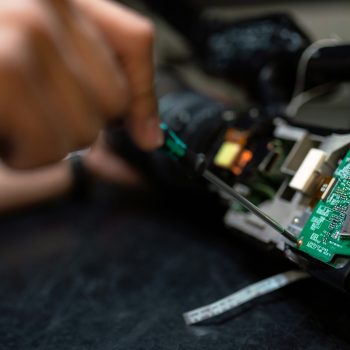Closing sales is always difficult, but more so if you’re a B2B (Business to Business) hardware startup. Why? Because B2B differs from B2C (Business to Client) in several important ways.
First, B2B products are more complicated than B2C consumer items, and therefore more difficult to market. As a consumer hardware startup, you have multiple options to market your venture. Start a crowdfunding campaign, have a few tech journalists review your product, talk to customers directly about your product and get feedback.
With B2C, you can afford to have an MVP and approach customers directly. Based on their feedback, you can then go on to build the final product. Since consumers are more than willing to try new products, and the losses are not catastrophic if a test product fails, it is considerably easier to market a B2C hardware product.
B2B hardware products, on the other hand, present some unique challenges. Since you’re marketing to well-established businesses and companies, you have a lot more at stake if your product doesn’t work or perform as advertised.
To start with, getting a meeting with B2B clients is in itself a difficult task. This meeting is a unique opportunity that may not repeat itself if you go wrong. Further, company executives expect you to come prepared to answer any questions they may have about your product. Do you have a good understanding of their niche? Have you tested the product to work in different conditions and scenarios? If you haven’t, you can use Siemens Solid Edge which provides powerful CAD, simulation, and manufacturing tools to streamline the process.
Since big companies have their reputation and money at stake, there is little room for error when you approach them with your product. Selling B2B products requires a lot more than mass marketing methods such as Facebook ads. You still have to use traditional methods of finding the right prospects, sending them a tailored pitch so they would be ready to meet with you (in many cases, you may have to use cold selling), and then convincing them to use your product in the first meeting. If you do manage that, you may have won a strategic ally for life, who may even help you improve the product by suiting it to their needs and conditions.
So how exactly do you convince B2B customers to trust your product and close more sales? In this article, we cover how B2B hardware companies can win a customer’s trust and get them to purchase a new product.
How to Build Trust as a B2B Hardware Company and Close More Sales
Consumers are more likely to be open and willing to try out new solutions, as opposed to companies who have a lot more at stake when buying a new product.
Here are some ways you can convince your target companies that you are the perfect choice for them:
1. Get Testimonials and Case Studies
Word of mouth is still the best way to promote your product, and people value testimonials more than you think. This is especially true if you’re a B2B company, so your first goal should be to get as many customers and users to vouch for your product as possible.
You can take this strategy up a notch by implementing case studies. Case studies are a bit more detailed than testimonials; they first outline a previous user’s pain points (which may be similar to the problems your client might be facing) and then go on to show how your product helped them overcome it.
2. Show Them the Product Differentiation and Value
When pitching businesses, you’ll be asked about return on investment (ROI). This means you have to quantify what difference your product will make to the customer’s bottom line, how you can improve their revenue, or how your product adds value to their efforts.
There are two ways you can add value. Either you can reduce their production costs, or you can improve the viability of their product. In other words, your product might help them perform certain tasks more efficiently, or it might add more features to their existing product, or both. Be sure to clearly state what value you’re adding and how much of a difference it will make in terms of actual numbers.
3. Make Sure Your Product Works in Each Scenario
As mentioned above, dealing with B2B companies means ensuring that your product works as intended after testing it in many different conditions.
To do this you can use engineering simulation software. This will help you analyze your product performance in different real world conditions. If you’re looking for a viable solution, Siemens Solid Edge provides free access to a top-tier product development software.
Another advantage of simulation is that it can help you develop prototypes faster, based on the feedback provided by customers. Since your company is still at the startup stage, you can also customize products for different customers using simulation. You can see if the features requested by a particular client will work well in the real world using virtual engineering simulation. This will be your point of differentiation from big competitors who are often rigid and cannot afford to customize their products for individual customers.
4. Get as Much Feedback as Possible
Remember that a big part of sales is active listening. You need to listen to customer’s pain points and ask as many questions as possible. Instead of simply pitching how great your product is, ask them what their problems are and then explain how your product can solve them. Gather as much information as possible about your target customer’s problems, possible solutions, decision-making process and requirements.
If a client rejects your proposal, don’t be disheartened. Look at the brighter side. Rejections show you what you’re doing wrong and how you can improve. For a startup, feedback is the most valuable asset. Take note of all feedback that customers have to offer, and also the features that they are looking for. If you find a particular feature requested by many customers, or a particular suggestion repeated many times, incorporate it in your product and watch the difference it makes.
5. See How Your Product Affects Other Departments
Remember that the decision to buy your product will not be made by a single individual or department, so be sure to take that into account when making your pitch. Think of all the departments your product will improve, and then pitch to each of them.
We hope this article provided you with enough tips to close sales. What are your favorite strategies to close deals? Let us know in the comments below!
On that note, if you’re looking for an economical engineering simulation software provider, we’d urge you to check out Siemens Solid Edge. They provides free access to top-tier product development software. The program is completely free and equity-free.




People reacted to this story.
Show comments Hide comments[…] important to figure out a sales strategy early on. Don’t just focus on hiring engineering talent. Also, look at adding valuable marketing […]
[…] important to figure out a sales strategy early on. Don’t just focus on hiring engineering talent. Also, look at adding valuable marketing […]
Comments are closed.